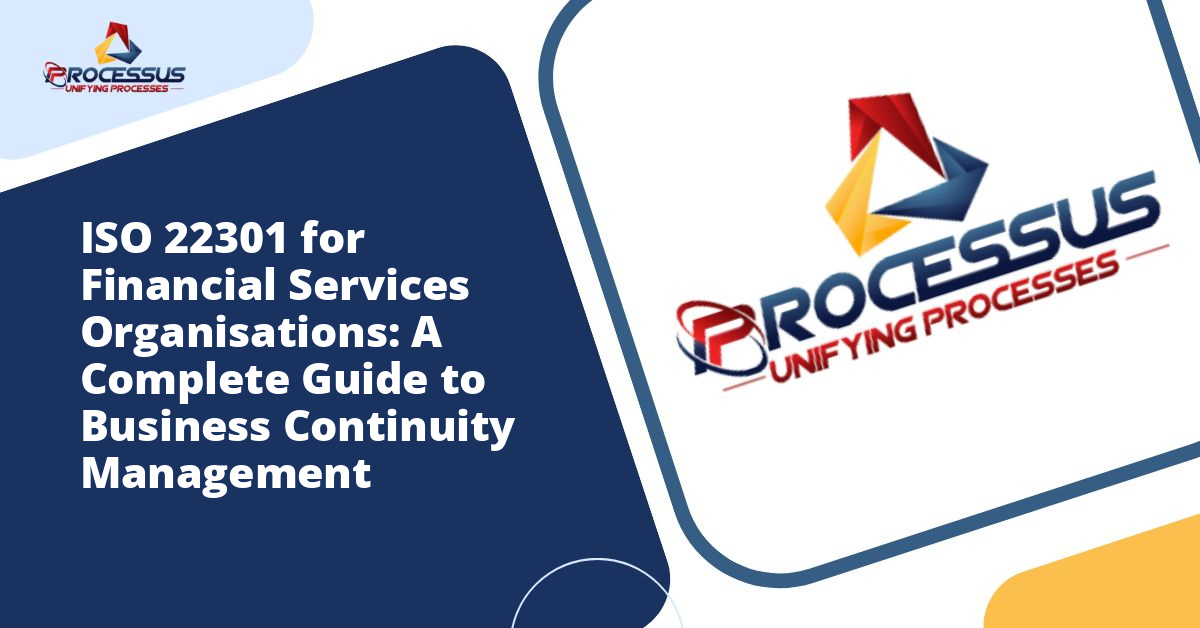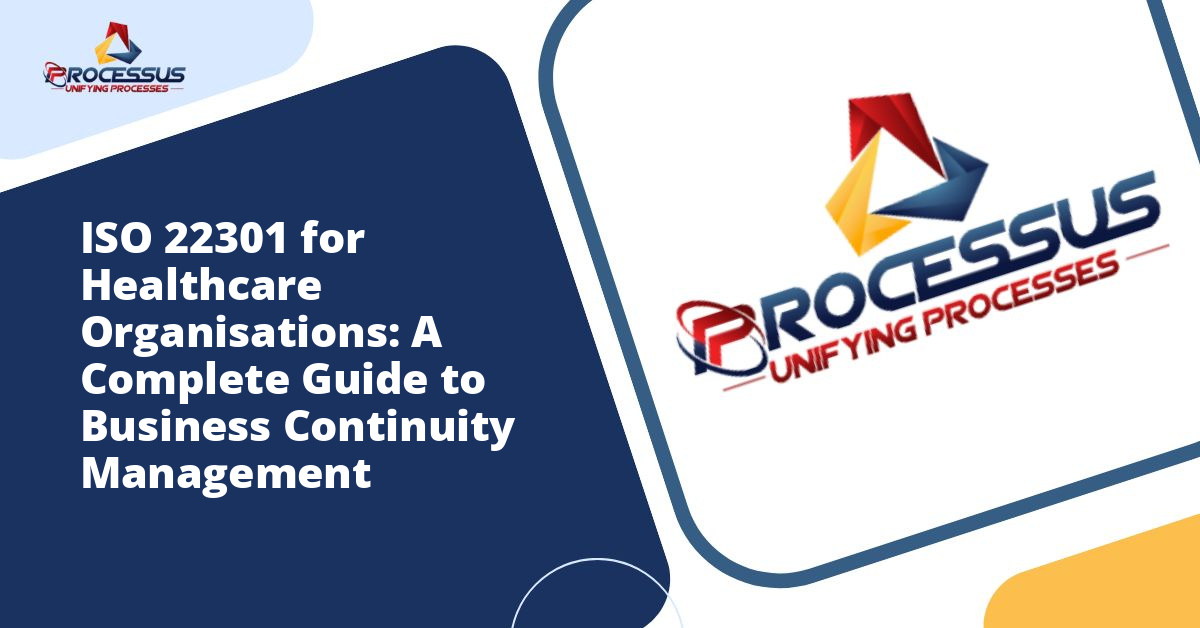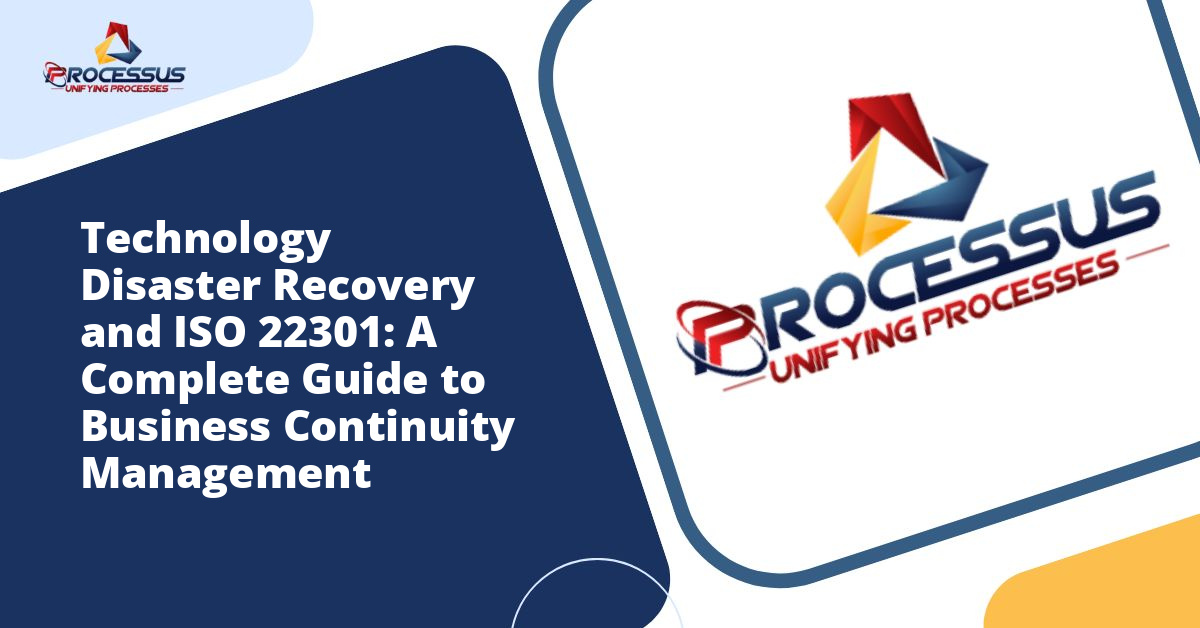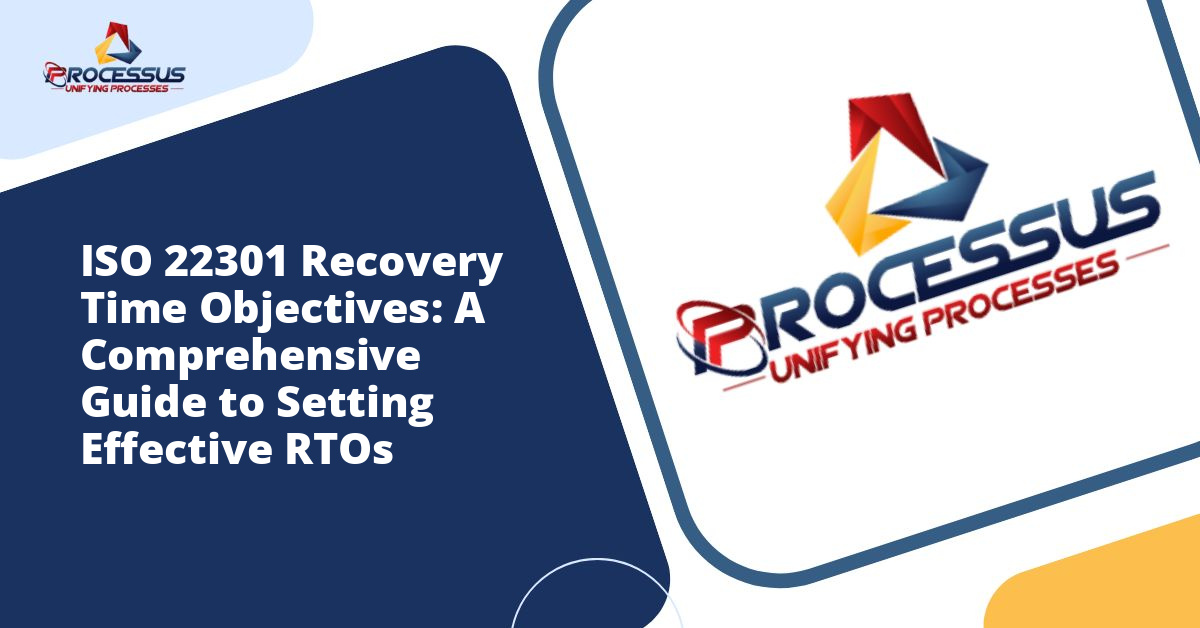In today’s interconnected global economy, financial services organisations face an unprecedented array of threats that could disrupt their operations. From cyber attacks and natural disasters to pandemics and system failures, the ability to maintain critical operations during adverse events has become a fundamental requirement rather than a competitive advantage. ISO 22301, the international standard for business continuity management systems (BCMS), provides a robust framework that helps financial institutions prepare for, respond to, and recover from disruptive incidents while maintaining essential services to their customers.
This comprehensive guide explores how ISO 22301 applies specifically to financial services organisations, the benefits of implementation, and the practical steps required to achieve certification. You might also enjoy reading about Business Impact Analysis for ISO 22301 Compliance: A Complete Implementation Guide.
Understanding ISO 22301 and Its Relevance to Financial Services
ISO 22301 is an internationally recognised standard that specifies requirements for planning, establishing, implementing, operating, monitoring, reviewing, maintaining, and continually improving a documented management system to protect against, reduce the likelihood of occurrence, prepare for, respond to, and recover from disruptive incidents when they arise. You might also enjoy reading about ISO 22301 vs ISO 27031: A Complete Guide to Understanding the Key Differences.
For financial services organisations, including banks, insurance companies, investment firms, payment processors, and fintech companies, the stakes are particularly high. These institutions handle sensitive financial data, process millions of transactions daily, and serve as critical infrastructure for the broader economy. A significant disruption to their services can cascade through the entire financial system, affecting businesses and individuals alike. You might also enjoy reading about ISO 22301 Testing and Exercise Programme: A Complete Guide to Business Continuity Validation.
Why Financial Services Need Business Continuity Management
The financial sector operates in an environment where trust, reliability, and continuous availability are paramount. Customers expect to access their accounts, make payments, and conduct transactions without interruption. Regulators demand that financial institutions maintain operational resilience and protect consumer interests. ISO 22301 addresses these expectations by providing a systematic approach to identifying potential threats, assessing their impact, and implementing appropriate mitigation strategies.
Recent years have demonstrated the critical importance of robust business continuity planning. The global pandemic forced many organisations to rapidly shift to remote working arrangements while maintaining service delivery. Cyber attacks have become increasingly sophisticated, targeting financial institutions with ransomware and distributed denial of service attacks. Natural disasters continue to threaten physical infrastructure and personnel availability. Financial organisations with mature business continuity management systems have demonstrated greater resilience in the face of these challenges.
Key Components of ISO 22301 for Financial Institutions
Implementing ISO 22301 requires financial services organisations to develop and maintain several critical components that work together to create a comprehensive business continuity management system.
Business Impact Analysis
The business impact analysis (BIA) forms the foundation of any effective BCMS. This process involves identifying critical business functions, understanding the potential consequences of their disruption, and determining the maximum tolerable period of disruption for each function. For financial services organisations, this analysis must consider numerous factors including regulatory requirements, customer expectations, contractual obligations, and interdependencies with other systems and third parties.
A thorough BIA examines both quantitative impacts such as financial losses, regulatory fines, and transaction volumes, as well as qualitative factors including reputational damage, customer confidence, and competitive position. Financial institutions typically discover that their recovery time objectives (RTOs) and recovery point objectives (RPOs) are measured in minutes or hours rather than days, reflecting the critical nature of their services.
Risk Assessment and Treatment
Following the business impact analysis, organisations must conduct comprehensive risk assessments to identify potential threats to their critical functions. Financial services face a diverse threat landscape including technological risks such as system failures and cyber attacks, environmental threats like natural disasters and pandemics, human factors including key person dependencies and insider threats, and external dependencies such as third party service providers and infrastructure failures.
The risk treatment process involves evaluating each identified risk and determining appropriate responses. Options include implementing preventive controls to reduce the likelihood of occurrence, developing response procedures to minimise impact if incidents occur, transferring risk through insurance or contractual arrangements, and accepting residual risks where appropriate. Financial institutions must balance the cost of risk treatments against the potential impact of disruptions, guided by their risk appetite and regulatory obligations.
Business Continuity Strategies
Based on the findings from the BIA and risk assessment, financial organisations must develop practical strategies to maintain or restore critical functions within required timeframes. These strategies typically include multiple layers of protection and recovery capabilities.
Technology resilience strategies might encompass redundant systems, geographical distribution of data centres, real time data replication, automated failover capabilities, and cloud based backup solutions. For financial services handling real time transactions, these technical solutions must ensure that no transactions are lost and that data integrity is maintained throughout any disruption.
Workplace recovery strategies address how essential staff will continue working if primary facilities become unavailable. Many financial institutions now maintain fully equipped alternate sites, enable remote working capabilities for critical roles, and establish mutual aid agreements with other organisations. The rapid shift to remote working during recent global events has accelerated investment in these capabilities.
People related strategies recognise that technology alone cannot ensure continuity. Financial institutions must consider succession planning for key roles, cross training to reduce single points of failure, clear communication protocols during incidents, and staff welfare provisions to ensure personnel remain able to perform critical functions during stressful events.
Documentation and Procedures
ISO 22301 requires organisations to document their BCMS comprehensively. For financial services, this documentation serves multiple purposes including providing clear guidance during high stress incident situations, demonstrating compliance to regulators and auditors, facilitating training and awareness activities, and enabling continuous improvement through regular review and updates.
Key documents include the business continuity policy establishing management commitment and objectives, business continuity plans detailing response and recovery procedures for specific scenarios, contact lists and escalation procedures, recovery procedures for critical systems and processes, and communication templates for internal and external stakeholders.
Financial institutions must ensure these documents remain current, accessible during disruptions (including maintaining offline copies), written in clear language that can be understood under pressure, and regularly tested to verify their effectiveness.
Benefits of ISO 22301 Certification for Financial Services
While developing business continuity capabilities delivers value regardless of certification, pursuing formal ISO 22301 certification offers additional advantages for financial services organisations.
Regulatory Compliance and Assurance
Financial services operate under intense regulatory scrutiny. Many jurisdictions have introduced operational resilience requirements that closely align with ISO 22301 principles. Regulators in the European Union, United Kingdom, United States, Singapore, and other major financial centres have published guidance or requirements expecting financial institutions to maintain robust business continuity capabilities.
ISO 22301 certification provides objective evidence of compliance with these regulatory expectations. Independent auditors verify that the organisation has implemented appropriate controls, conducted thorough risk assessments, developed realistic recovery strategies, and regularly tests its capabilities. This external validation can significantly streamline regulatory examinations and demonstrate board level commitment to operational resilience.
Enhanced Customer Confidence
Customers of financial services institutions need assurance that their funds, investments, and financial data remain secure and accessible. ISO 22301 certification signals to customers that the organisation has invested in protecting their interests and maintaining service availability even during adverse events.
For corporate clients particularly, certification provides confidence when selecting banking partners, insurance providers, or payment processors. Many large corporations now include business continuity capabilities and certifications in their vendor assessment criteria. Financial institutions with ISO 22301 certification gain a competitive advantage in these evaluations.
Improved Operational Performance
The discipline required to achieve and maintain ISO 22301 certification drives operational improvements beyond pure continuity benefits. The structured approach to understanding critical processes, documenting procedures, and testing capabilities often reveals inefficiencies and opportunities for enhancement.
Financial institutions report that their business continuity programmes have identified unnecessary process complexity, highlighted technology vulnerabilities requiring attention, improved understanding of interdependencies, strengthened supplier management practices, and enhanced communication across organisational silos.
Cost Reduction and Insurance Benefits
While implementing ISO 22301 requires investment, certified organisations often realise cost savings over time. More efficient incident response reduces the duration and impact of disruptions, decreasing associated costs. Preventive measures identified through risk assessment help avoid incidents altogether. Some insurance providers offer premium reductions for organisations with certified business continuity management systems, recognising their lower risk profile.
Implementation Roadmap for Financial Services Organisations
Achieving ISO 22301 certification requires a structured implementation approach. The following roadmap provides guidance for financial services organisations embarking on this journey.
Phase One: Establishing Foundation and Governance
Successful implementation begins with securing executive sponsorship and establishing appropriate governance structures. Financial services organisations should appoint a senior executive as the BCMS owner, typically a Chief Operating Officer, Chief Risk Officer, or dedicated Business Continuity Director. This individual must have sufficient authority and resources to drive implementation across the organisation.
A steering committee comprising representatives from key business lines, technology, risk, compliance, and operations should provide oversight and strategic direction. Working groups focusing on specific aspects such as technology recovery, crisis communication, or third party management can accelerate implementation while building broader organisational engagement.
During this phase, organisations should define the scope of their BCMS, determining which business units, processes, and locations will be included. They must also establish the business continuity policy, setting out objectives, responsibilities, and management commitment.
Phase Two: Analysis and Strategy Development
This phase involves conducting the detailed analytical work that underpins the BCMS. Financial institutions should begin with a comprehensive business impact analysis, engaging process owners across the organisation to understand critical functions, dependencies, and recovery requirements.
The risk assessment follows, identifying potential threats to critical functions and evaluating their likelihood and potential impact. For financial services, this assessment must consider a wide range of scenarios including technology failures, cyber incidents, loss of key facilities, supply chain disruptions, pandemic events, and market shocks.
Based on these analyses, organisations develop business continuity strategies appropriate to their risk profile and recovery requirements. Financial institutions should evaluate multiple strategic options, considering cost, effectiveness, and regulatory expectations before finalising their approach.
Phase Three: Plan Development and Resource Preparation
With strategies defined, organisations must develop detailed business continuity plans and assemble the resources required for their execution. This includes documenting specific response and recovery procedures, establishing alternate facilities or remote working capabilities, implementing technology solutions for data protection and system recovery, preparing communication materials and protocols, and training personnel in their business continuity roles.
Financial services organisations should develop plans at multiple levels including strategic level incident management plans for senior leadership, tactical level business continuity plans for business units and functions, and technical recovery plans for critical systems and applications.
Phase Four: Testing and Continuous Improvement
ISO 22301 requires organisations to regularly test their business continuity arrangements to verify effectiveness and identify improvement opportunities. Financial institutions should implement a comprehensive testing programme including tabletop exercises to validate decision making processes, functional tests of specific recovery capabilities, scenario based simulations involving multiple teams, and full scale exercises testing end to end recovery.
Testing should progressively increase in complexity and realism. Early tests might focus on individual components, while mature programmes conduct unannounced exercises simulating realistic scenarios. All tests should be followed by thorough debriefs documenting lessons learned and corrective actions.
Phase Five: Certification Audit
When the organisation believes its BCMS meets ISO 22301 requirements, it can engage an accredited certification body to conduct an independent audit. The certification process typically involves two stages. The Stage 1 audit reviews documentation to assess readiness for full certification. The Stage 2 audit involves detailed examination of implementation, including interviews with personnel, review of records, and evaluation of testing results.
Financial services organisations should prepare thoroughly for certification audits, ensuring documentation is complete and accessible, personnel understand the BCMS and their roles, evidence of testing and continuous improvement is available, and any identified gaps from internal audits have been addressed.
Ongoing Maintenance and Continuous Improvement
ISO 22301 certification is not a one time achievement but rather represents an ongoing commitment to maintaining and improving business continuity capabilities. Certified organisations must conduct regular internal audits, perform annual management reviews, maintain documentation reflecting organisational changes, continue testing programmes, and undergo surveillance audits by the certification body.
Financial services organisations should view their BCMS as a living system that evolves with changing threats, technologies, and business requirements. Regular updates ensure that business continuity arrangements remain aligned with current operations and continue to meet stakeholder expectations.
Overcoming Common Implementation Challenges
Financial services organisations implementing ISO 22301 often encounter similar challenges. Understanding these obstacles and their solutions can smooth the implementation journey.
Resource Constraints
Business continuity programmes compete for resources with other priorities. Successful organisations address this by clearly articulating the value proposition, linking business continuity to regulatory requirements and strategic objectives, demonstrating return on investment through quantified risk reduction, and integrating business continuity activities with existing programmes rather than creating entirely separate workstreams.
Organisational Complexity
Large financial institutions often operate across multiple jurisdictions, business lines, and legal entities, creating complexity in implementing consistent business continuity capabilities. Addressing this requires establishing clear governance with appropriate escalation paths, developing framework level standards while allowing local implementation flexibility, leveraging technology platforms to provide consistent capabilities, and fostering communities of practice to share knowledge across the organisation.
Third Party Dependencies
Modern financial services rely extensively on third party providers for technology infrastructure, processing services, and various support functions. Managing third party continuity requires incorporating supplier continuity into procurement processes, regularly reviewing supplier business continuity capabilities, understanding supplier dependencies and potential concentration risks, and developing contingency plans for supplier failures.
Conclusion
ISO 22301 provides financial services organisations with a proven framework for building operational resilience in an increasingly complex and threatening environment. The standard’s systematic approach ensures that business continuity management receives appropriate attention, resources, and governance while delivering measurable improvements in preparedness and response capabilities.
For financial institutions, the benefits extend beyond compliance and certification. A mature business continuity management system enhances operational efficiency, strengthens customer confidence, improves risk management, and ultimately protects the organisation’s reputation and financial performance.
While achieving ISO 22301 certification requires significant effort, the investment delivers lasting value. Financial services organisations that embrace business continuity management as a core capability rather than merely a compliance exercise position themselves to navigate disruptions successfully, maintain stakeholder trust, and emerge stronger from adverse events.
As the operating environment for financial services continues to evolve with emerging technologies, changing customer expectations, and new threats, ISO 22301 provides the adaptable foundation needed to maintain resilience regardless of what challenges the future may bring.







